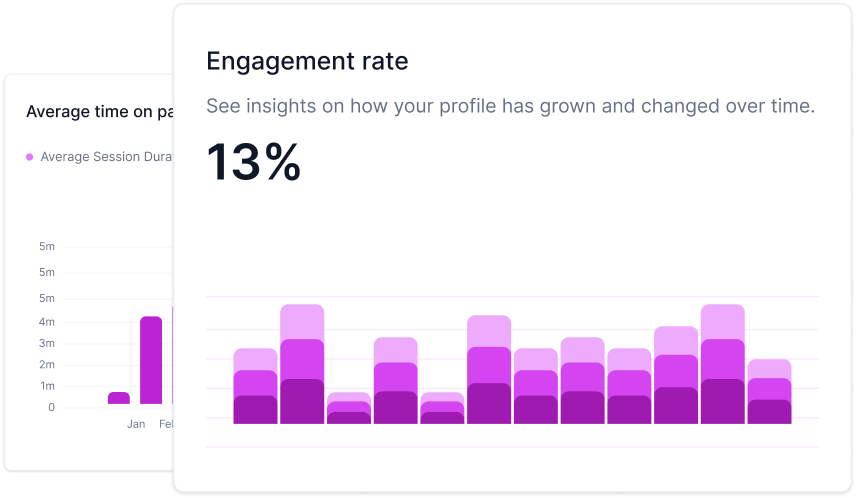What is the Conversion Rate Optimization (CRO)?
Conversion Rate Optimization (CRO) is the practice of systematically enhancing a website or marketing campaign to improve the percentage of visitors who take a desired action, such as making a purchase, filling out a form, or subscribing, ultimately increasing the overall effectiveness and success of your digital efforts.
In the dynamic realm of digital marketing and online business, success often hinges on turning visitors into customers. This process, called Conversion Rate Optimization (CRO), plays a pivotal role in achieving that objective. In this blog post, we'll explore the ins and outs of CRO, providing a clear definition, practical strategies, and the tools to measure its success.
1. What is Conversion Rate Optimization (CRO), and why is it important for my website or marketing campaigns?
Conversion Rate Optimization (CRO) is the systematic process of fine-tuning your website or marketing materials to increase the percentage of visitors who take a specific desired action. This action could be purchasing, signing up for a newsletter, filling out a contact form, or any other meaningful engagement that aligns with your goals. CRO involves crafting a user experience that encourages and facilitates these conversions.
The importance of CRO cannot be overstated. It directly impacts your bottom line by optimizing the efficiency of your digital efforts. By boosting the conversion rate, you maximize the value you derive from your existing website traffic, marketing campaigns, and advertising spend. Rather than solely focusing on attracting more visitors, CRO helps you make the most of the traffic you already have.
2. What are the key strategies and best practices for conducting effective Conversion Rate Optimization to boost my online conversions?
Effective CRO is a multifaceted approach that involves various strategies and best practices:
a. User-Centric Design: Ensure that your website or landing page design is user-friendly, intuitive, and visually appealing. A cluttered or confusing layout can deter conversions.
b. A/B Testing: Experiment with different elements on your webpages, such as headlines, images, calls to action, and forms, and compare their performance through A/B testing to identify what resonates with your audience.
c. Clear Calls to Action (CTAs): Utilize persuasive and prominent CTAs that guide visitors toward the desired action. A clear, compelling CTA can make a significant difference in conversion rates.
d. Simplify Forms: If you require visitors to fill out forms, keep them concise and straightforward. Lengthy forms can be a conversion killer.
e. Compelling Content: Create content that is informative, engaging, and relevant to your audience. High-quality content builds trust and encourages users to take action.
f. Mobile Optimization: Ensure that your website is responsive and mobile-friendly. With the increasing use of smartphones, a mobile-optimized site is crucial for a positive user experience and higher conversion rates.
g. Performance Optimization: Fast-loading pages and a smooth browsing experience are essential. Slow websites can frustrate visitors and lead to higher bounce rates.
3. How can I measure the success of my CRO efforts, and what tools and metrics should I use to track and analyze improvements in conversion rates?
Measuring the success of your CRO efforts is crucial for ongoing improvement. Here are some key metrics and tools to help you track and analyze your progress:
a. Conversion Rate: This is the primary metric, representing the percentage of visitors who complete the desired action. Regularly monitor and compare your conversion rates to gauge improvements.
b. Google Analytics: This versatile tool provides insights into user behavior, including where visitors come from, what they do on your site, and where they drop off. It's invaluable for CRO analysis.
c. Heatmaps and Click Tracking: Tools like Crazy Egg and Hotjar offer heatmaps and click tracking, which visually represents how users interact with your site. They show where users click, move their cursors, and how far they scroll down a page.
d. Conversion Funnel Analysis: Platforms like Kissmetrics and Mixpanel allow you to set up conversion funnels to see the step-by-step journey visitors take before converting or dropping off.
e. Split Testing Tools: Tools like Optimizely and VWO enable A/B testing to compare the performance of different page elements, helping you make data-driven decisions.
f. Exit Surveys and Feedback: Collect user feedback through surveys or on-site polls to understand why visitors may not be converting. Their insights can be invaluable in refining your CRO strategy.
In conclusion, Conversion Rate Optimization (CRO) is the cornerstone of converting your existing traffic into valuable actions and revenue. By following best practices, utilizing relevant tools, and consistently measuring results, you can make your digital efforts work smarter, not harder, ultimately enhancing the success of your website and marketing campaigns.

